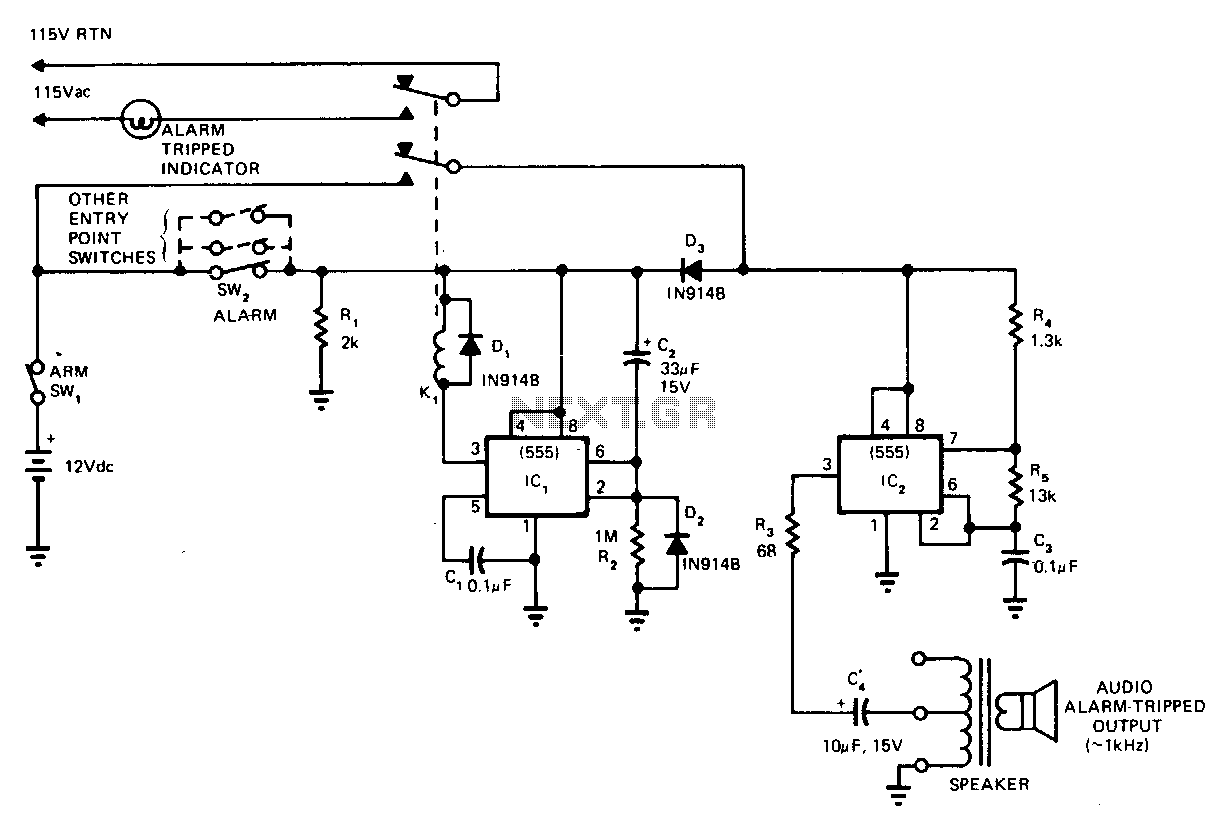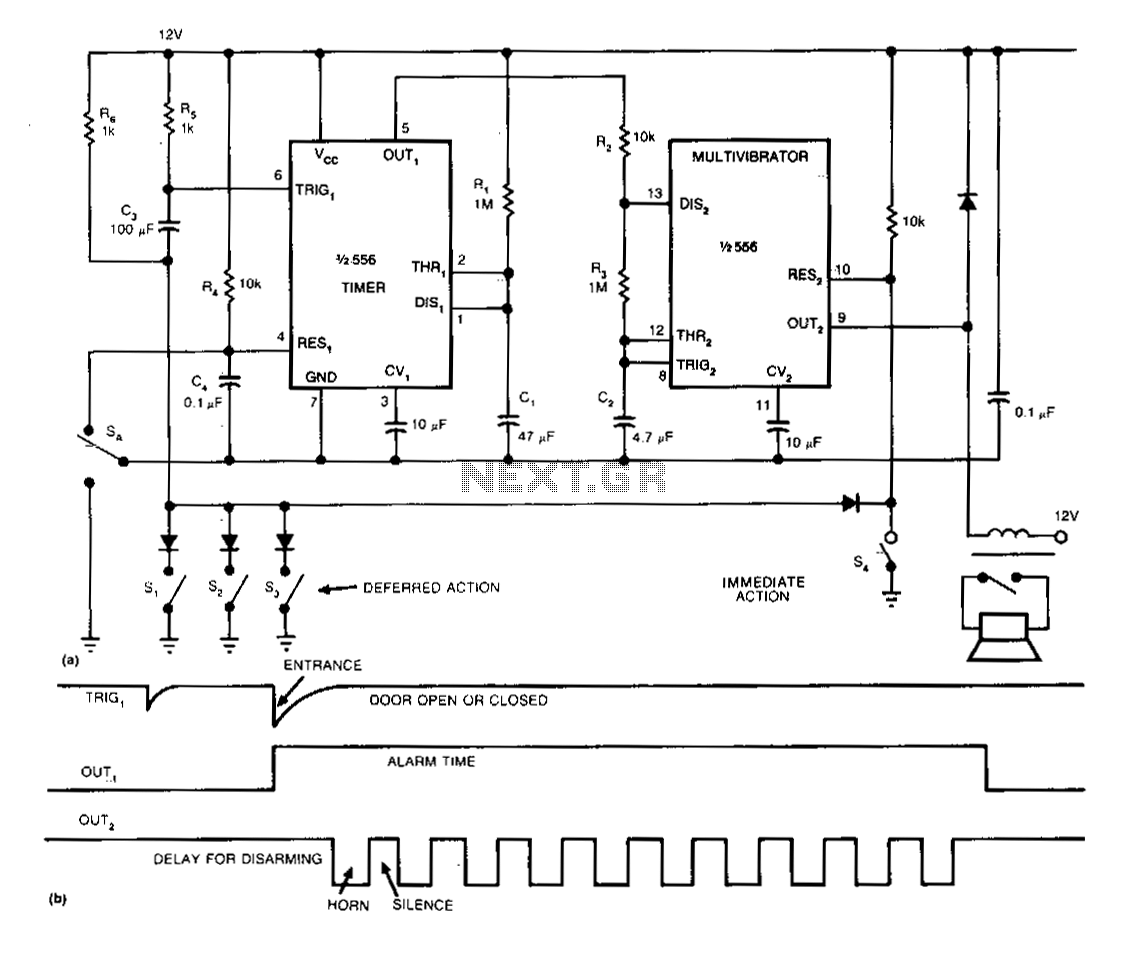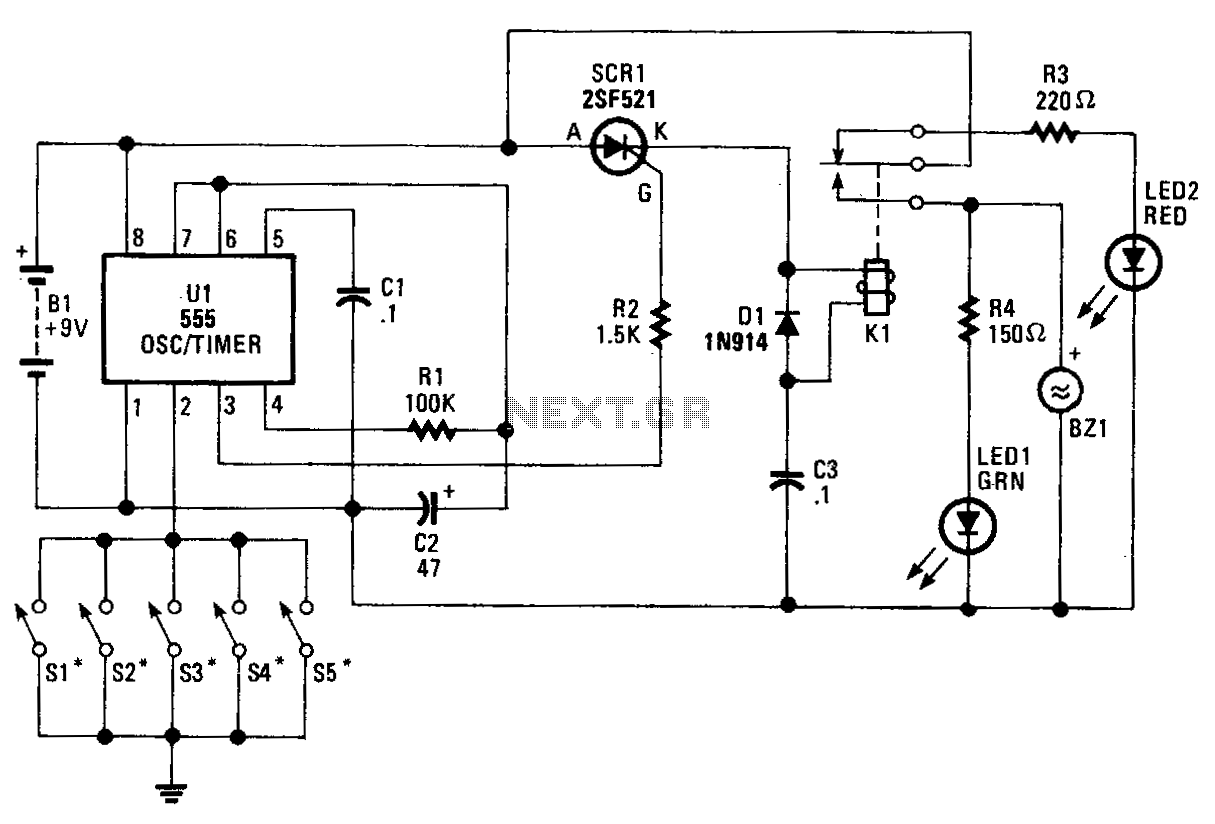
Burglar-alarm

This circuit cannot be shut off for 10 to 60 seconds, even if the trip condition is immediately removed. It draws no standby power from the battery and is self-resetting.
The described circuit operates under a delay mechanism that ensures it remains active for a specified duration, ranging from 10 to 60 seconds, regardless of the removal of the triggering condition. This feature is particularly useful in applications where a brief delay is necessary to prevent premature shutdowns or to allow for system stabilization.
The circuit is designed to be energy efficient, as it does not draw standby power from the battery, which is advantageous for battery-operated devices. This characteristic minimizes energy waste and prolongs battery life.
Additionally, the self-resetting function of the circuit allows it to return to its original state automatically after the delay period elapses. This feature enhances the reliability of the circuit in applications where manual intervention is impractical or undesirable.
To implement such a circuit, components such as resistors, capacitors, and a timer IC may be utilized to establish the timing mechanism. The timer IC can be configured in a monostable mode, where it generates a single output pulse of a defined duration in response to an input trigger. The design should also include appropriate protection circuitry to ensure the circuit can withstand various operating conditions without failure.
Overall, this circuit's combination of delay functionality, energy efficiency, and self-resetting capability makes it suitable for a wide range of electronic applications, particularly in the fields of automation and control systems.This circuit cannot be shut off for 10 to 60 seconds-even if the trip condition is immediately removed. It draws no standby power from the battery and is self-resetting.
The described circuit operates under a delay mechanism that ensures it remains active for a specified duration, ranging from 10 to 60 seconds, regardless of the removal of the triggering condition. This feature is particularly useful in applications where a brief delay is necessary to prevent premature shutdowns or to allow for system stabilization.
The circuit is designed to be energy efficient, as it does not draw standby power from the battery, which is advantageous for battery-operated devices. This characteristic minimizes energy waste and prolongs battery life.
Additionally, the self-resetting function of the circuit allows it to return to its original state automatically after the delay period elapses. This feature enhances the reliability of the circuit in applications where manual intervention is impractical or undesirable.
To implement such a circuit, components such as resistors, capacitors, and a timer IC may be utilized to establish the timing mechanism. The timer IC can be configured in a monostable mode, where it generates a single output pulse of a defined duration in response to an input trigger. The design should also include appropriate protection circuitry to ensure the circuit can withstand various operating conditions without failure.
Overall, this circuit's combination of delay functionality, energy efficiency, and self-resetting capability makes it suitable for a wide range of electronic applications, particularly in the fields of automation and control systems.This circuit cannot be shut off for 10 to 60 seconds-even if the trip condition is immediately removed. It draws no standby power from the battery and is self-resetting.

